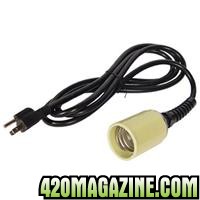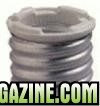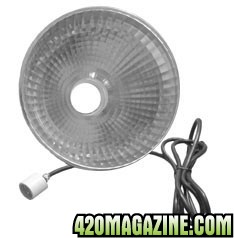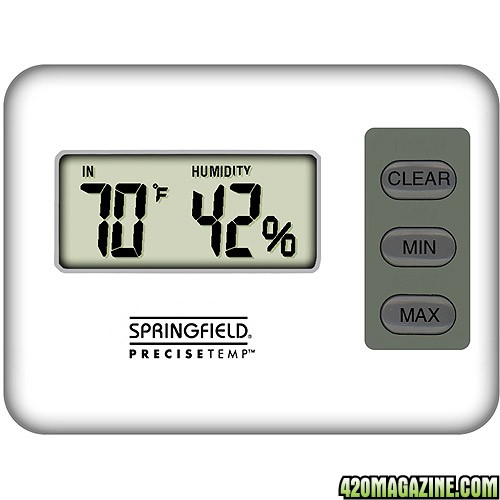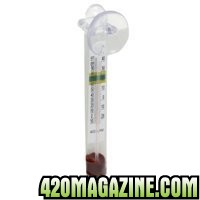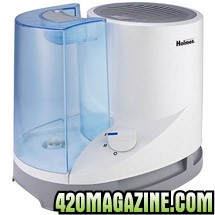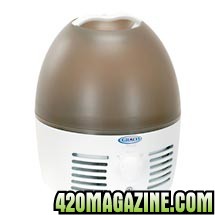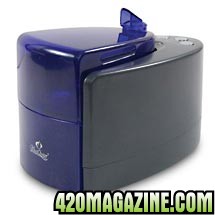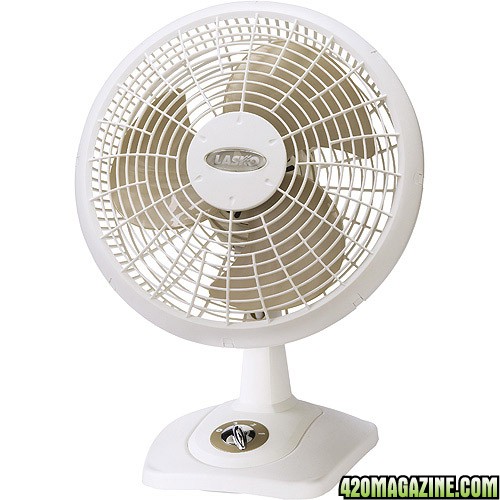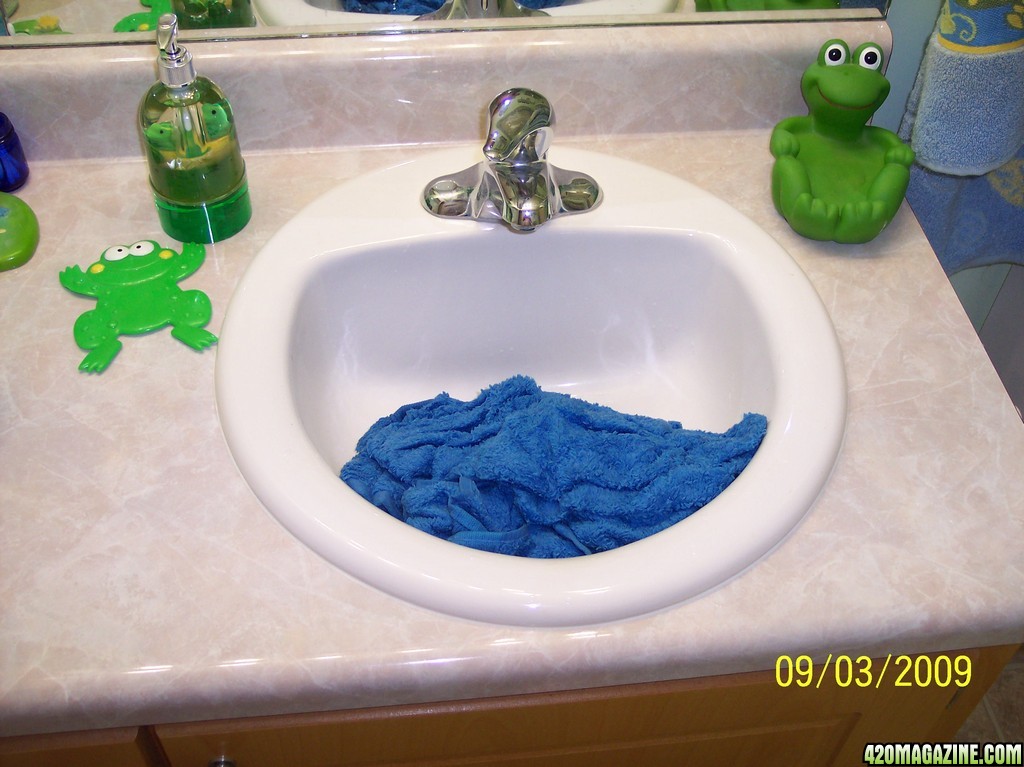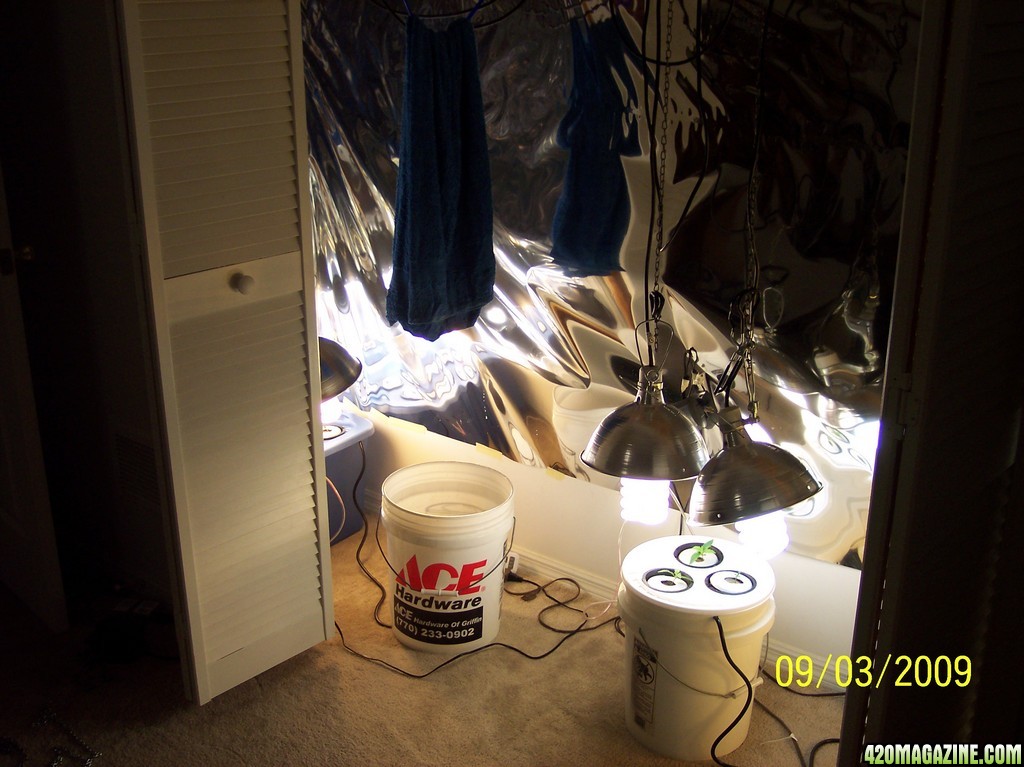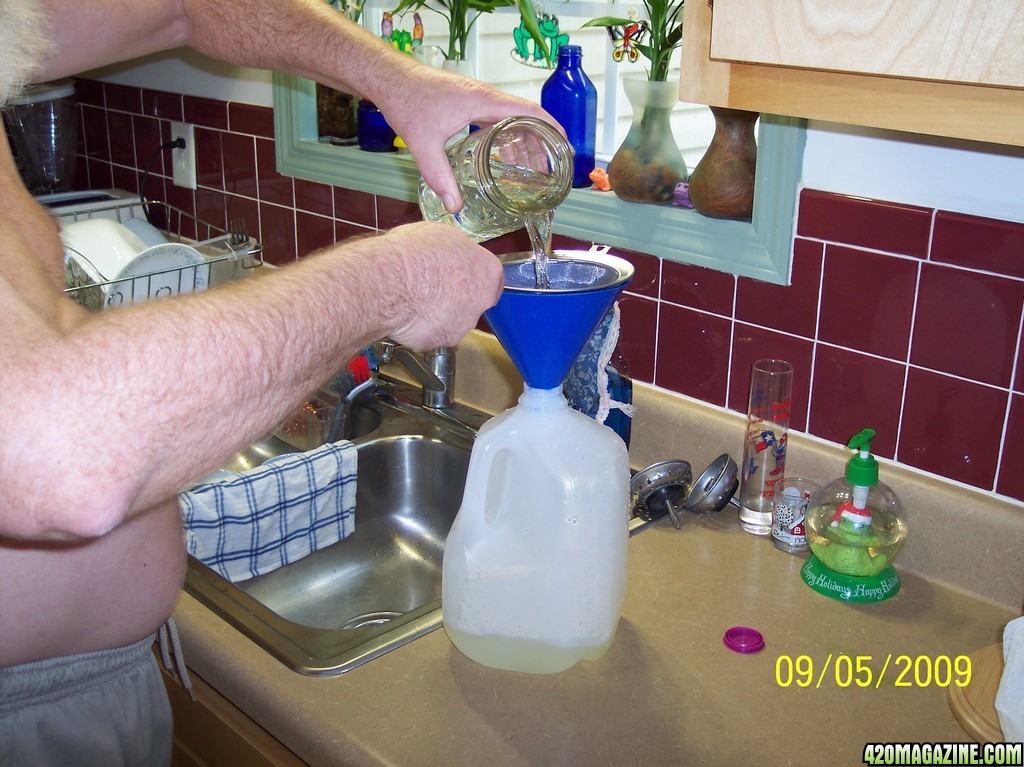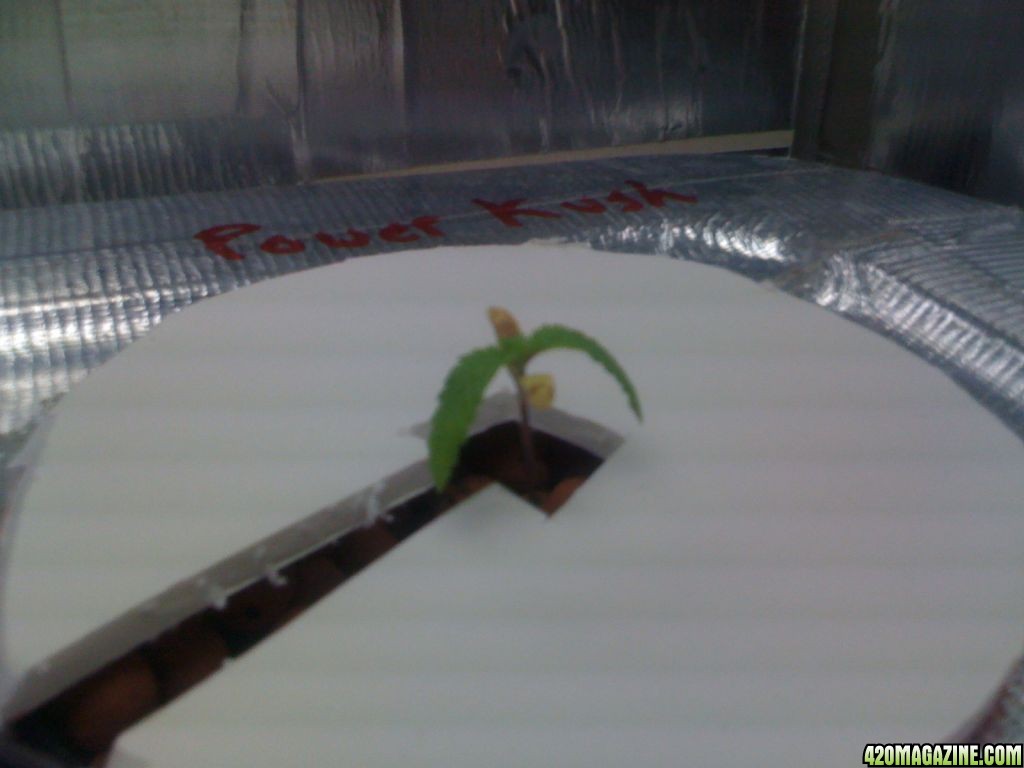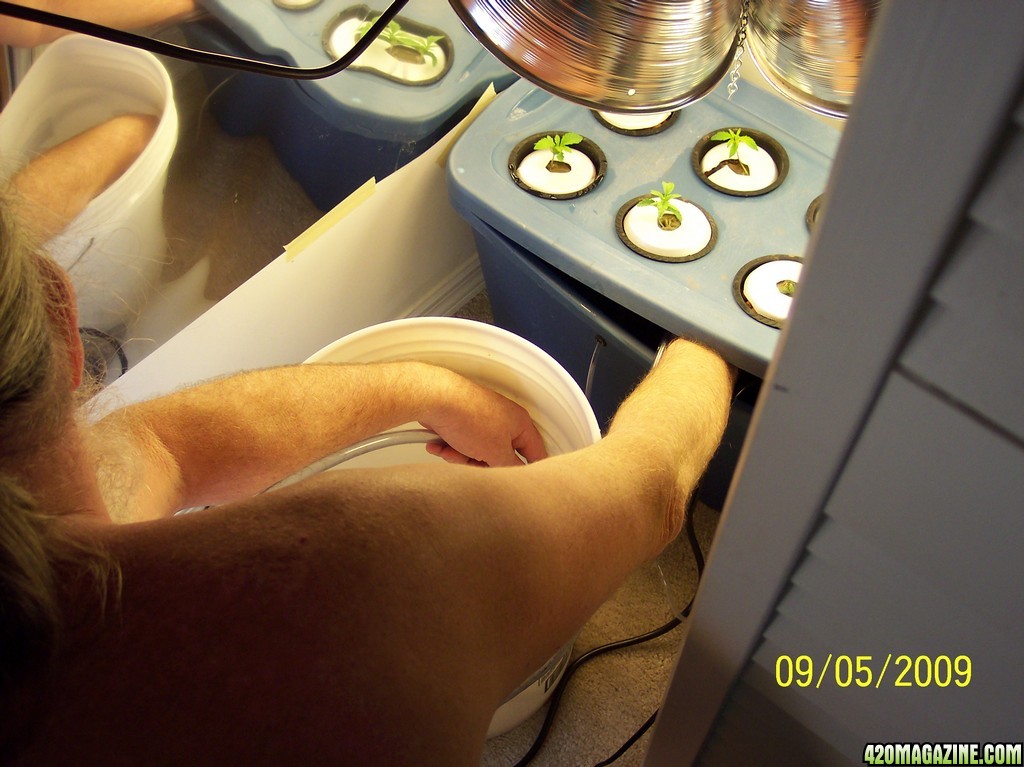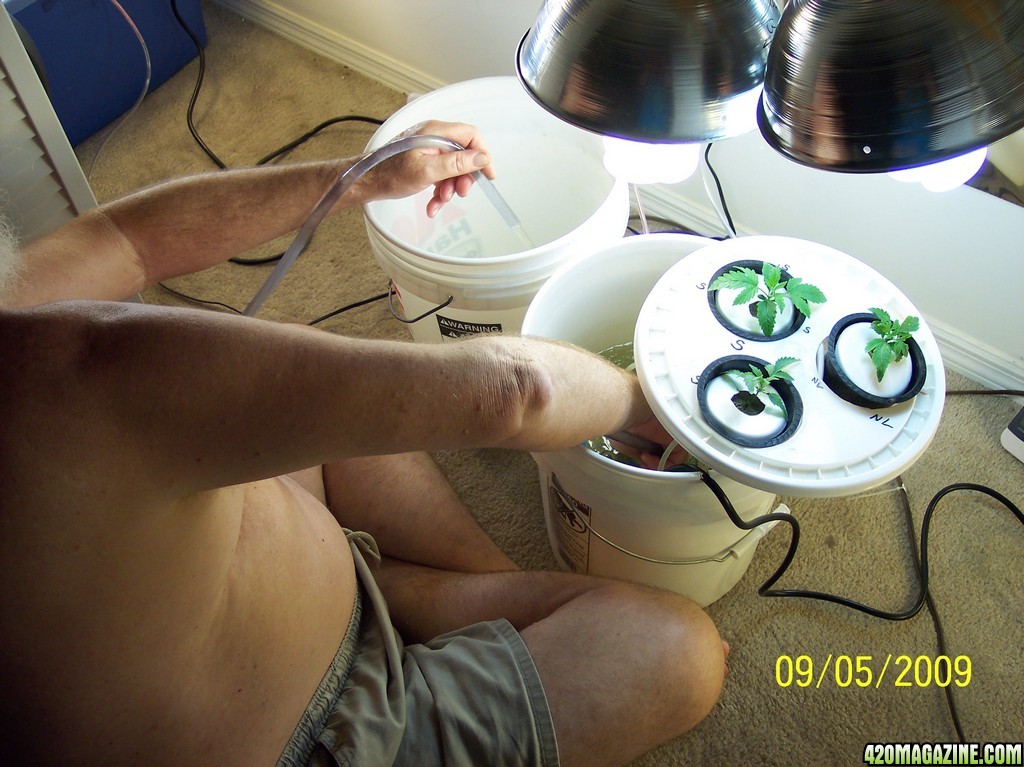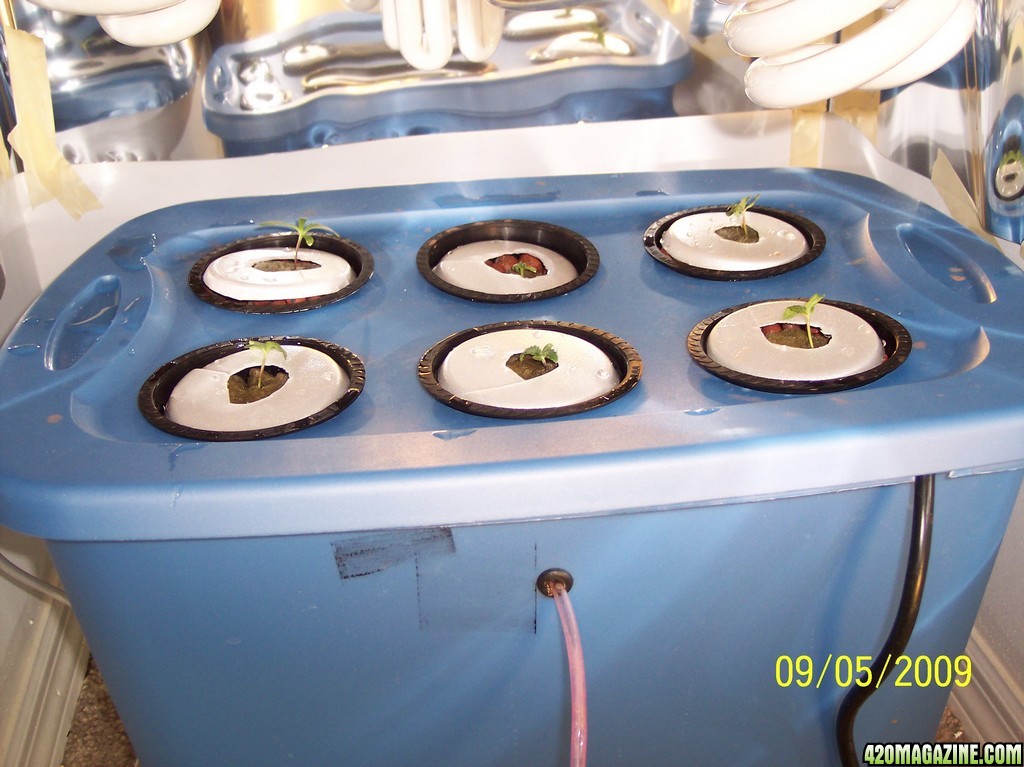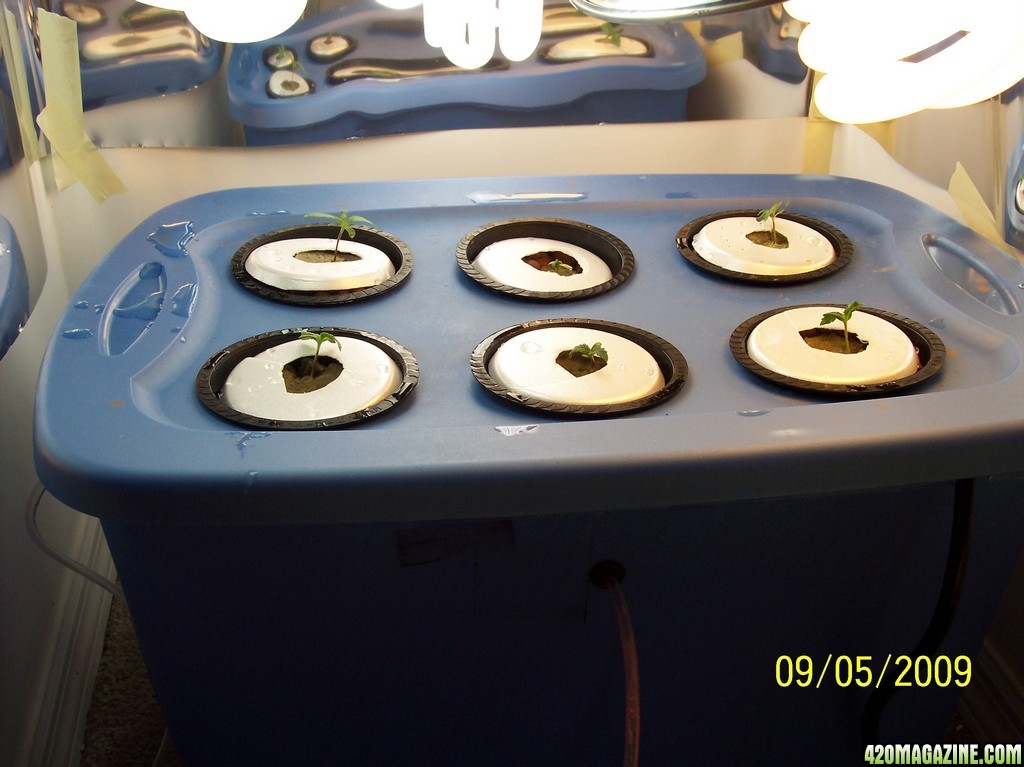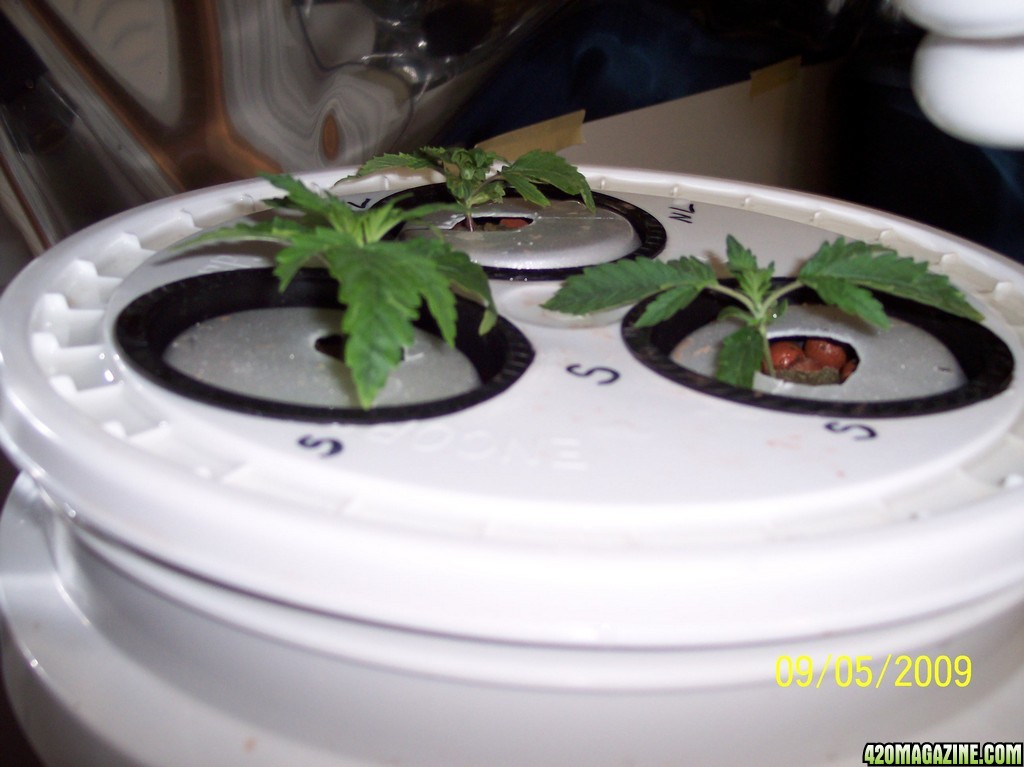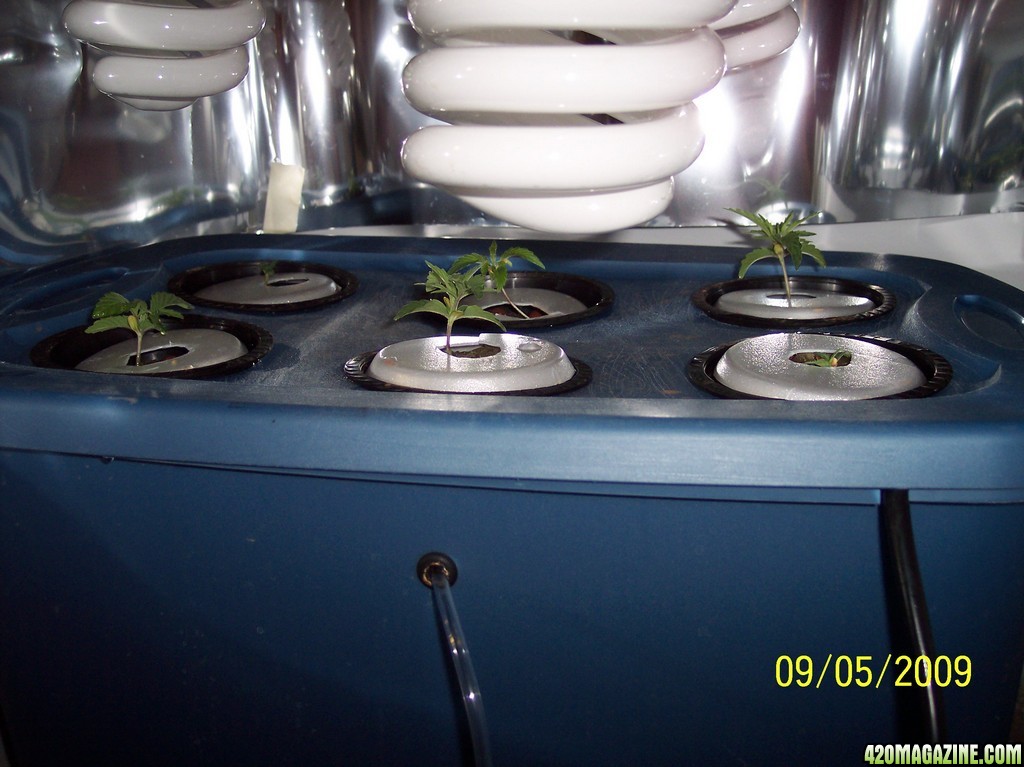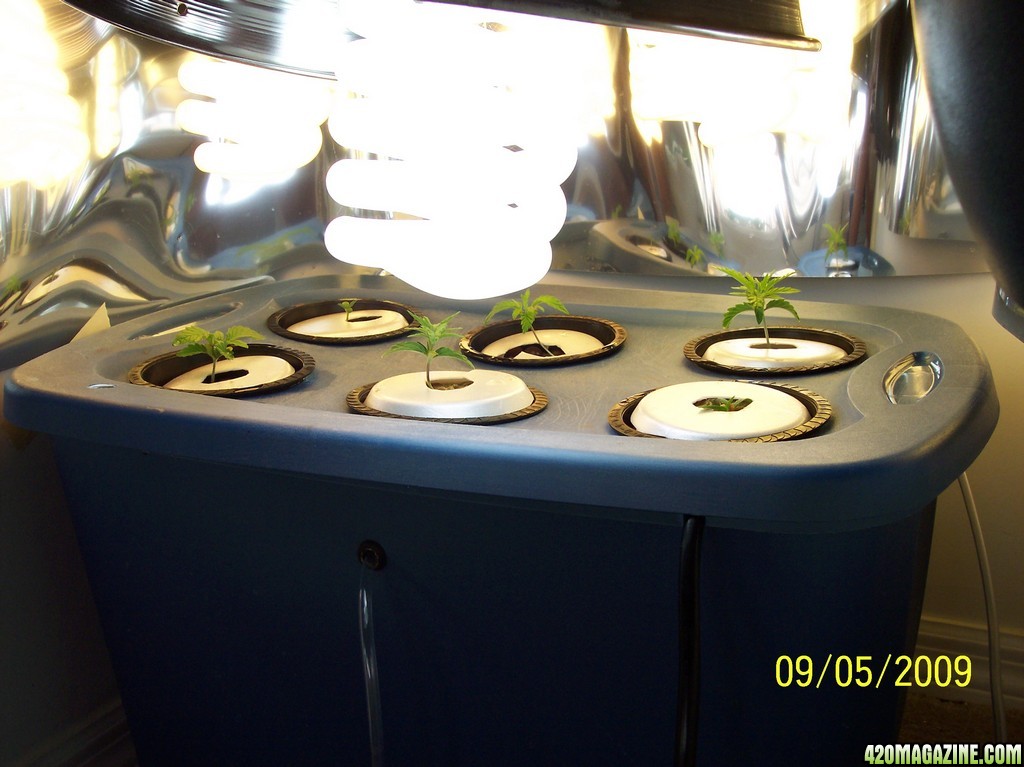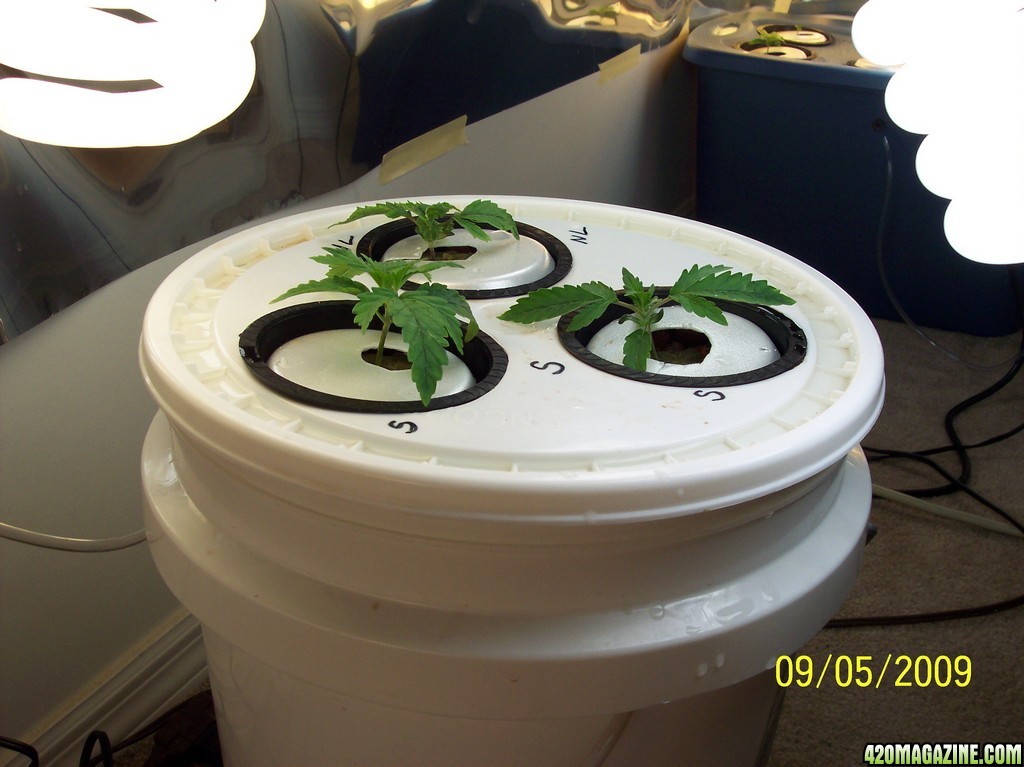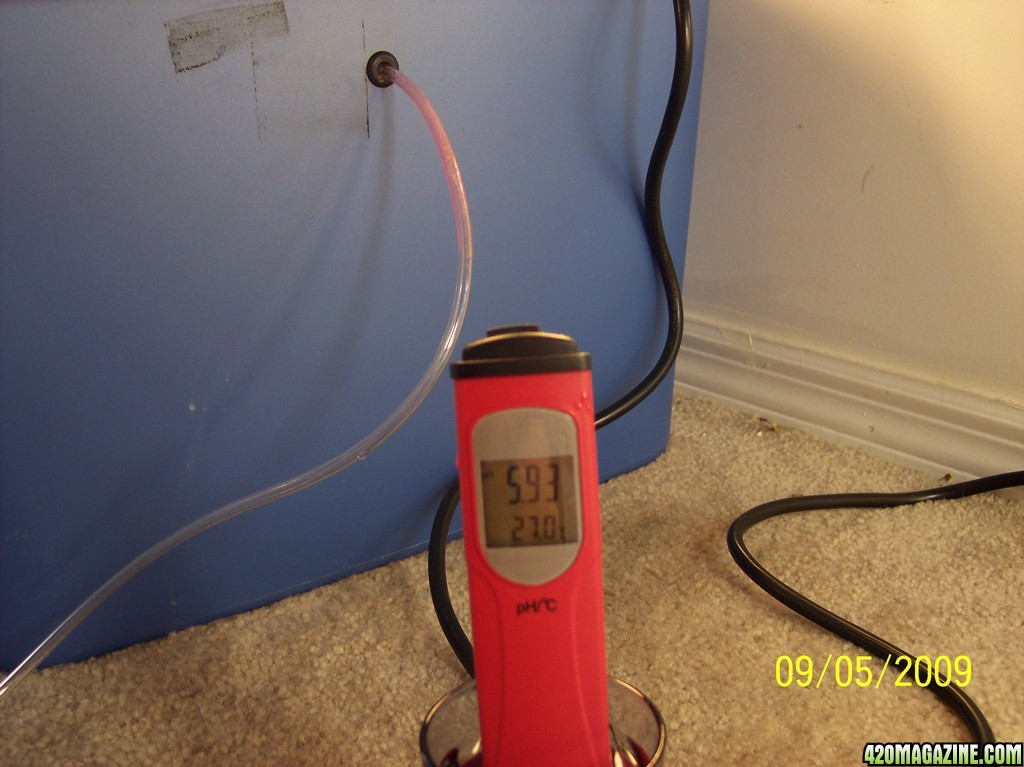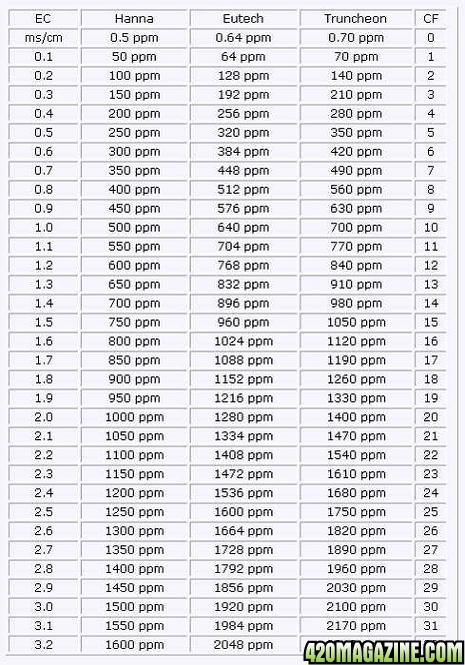Re: Roseman's Deep Water Culture Tutorial, SH Kit & DIY
FEEDING
If you are using the SH Deep Water Culture System, or a DWC grow, be it a store bought or a do it yourself homemade, this will help you learn more about feeding your babies and plants. Here I am discussing a 8 gallon reservoir using 6 gallons of water.
When a new born baby comes out of the womb, he comes out hungry! Same thing applies to puppies and most mammals. But you do not give them an 16 ounce T-Bone Steak and a giant baked potato to start.
You give them a weaker smaller feeding, with no spices, no onions, no large amounts of salt, and not too acidity.
Well, the same theory applies to your new pot sprouts.
When your seeds have germinated or sprouted or cracked, or been added to the tank, then about a week later, (much sooner if you pre-soaked the seeds) you will have your first node of leaves. A "node of leaves" means two opposing leaves, one directly across from the other. Do not count those first seen round leaves, called seed leaves or cotyledons.
When the second node first appears, meaning the 3rd nd 4th leaf, it is time to introduce the GROW and MICRO Nutes, also called the VEGGING and MICR nutes.
If using the SH premeasured nutes, add 1/4 packet or 1/4 dose of nutes (Grow and Micro nutes) to a gallon of water, pH adjust that one gallon and add it to the tank. As I said, new born babies are born hungry, but not ready for a full meal deal.
If you are using other brands of nutrients follow thier directions or use 1/4 recommended dose.
Once a day, every day, you check the water level and pH. It will be 2, maybe 3 weeks before they start drinking a half gallon a day that needs to be replaced.
As they grow, about every other day to every 2 days during the second week, you add another 1/4 packet, until you have used a full dose or full packet of nutes.
I use 1/4 dose when I see the 3rd and 4th leaf appear, no matter how small they are. (Again not counting the round seed leaves called cotyledons)
After the first 14 days, drain out 5 gallons, and add one gallon at a time, that is pH balanced, adding 5 gallons back. In the 5th gallon, add one full packet of GROW and MICRO nutes, shake and stir it good, before adding it.
After approaching 3 weeks, they will start drinking one half gallon a day. Around the 4th to 5th week, they will be drinking a full gallon a day.
Every 7 to ten days, you DRAIN AND REPLINISH. I prefer every 7 days to give the roots that much needed air bath that they love. If I find extra time, I do it every 4 days, but I put the drained water back in the tank on that EXTRA Drain.
FEEDING IF YOU DO NOT HAVE A PPM METER.
You will daily add one gallon of pH water TO REPLACE THE ONE GALLON MISSING. (Or 1/2 gallon daily earlier in the grow, clsoe to the 3rd or 4th week) If the water in the tank tests a pH of 7.0 (too high for example) and you know you want it lower, make one gallon of 5.0 water, and it will make the tank about 6.0 or in that neighborhood. ALSO, in that one gallon of water added daily, add 1/6 packet or dose of new nutes. One gallon or 1/6 of the tank was drank or absorbed, so you need to replace 1 gallon of water and 1/6 of the nutes.
Or in other words, if they drank 1/6 of the tank's water, they ate 1/6 of the nutes, so you need to replace that 1/6 that was consumed.
IF the grow area is VERY HOT, add back a little less than 1/6 nutes, the plant is just drinking and needing lots of water.
If the grow room is cool, or NOT VERY HOT, use the full 1/6 dose.
DRAINING AND REPLINISHING
First two grows I did, I syphoned the water out into a 5 gallon bucket with an Aquarium syphon hose. That was really a chore!
Then I learned to prop the lid open about three or 4 inches, STILL LEAVING THE LID ON THE TANK, BUT PROPPED UP ON ONE END and I reach in and take the Irrigation Hub off of the pump. I jsut lift it up. Then with a 1/2 or 3/4 inch hose, I use my fist as a coupling, I sit my fist on the upward pump tube with the hose half way in my fist, on top of the pump, and let the pump.....pump the water out into a 5 gallon bucket. It works good for me.
AFTER I remvoe the pump, I still use it to draint he tank, by removing the filter and filter cover, and lowering the pump back in, from a corner of the tank.
You can also use a WET-VAC, to drain it.
Let me add here again, I can not emphasis enough, that Roots love the AIR BATH they get during a Drain and Replinish. This is a very important step. The more often you can do it, the faster the plants will grow.
Remember what I am telling you here.
Pot plants sprout with two round leaves, called
cotyledons . Do NOT count those as leaves, they are really the inside of the seed.
AFTER 2 full leaves appear and the 3rd nd 4th are starting to be seen, tiny as they are, use 1/4 dose of nutes.
When you start a new grow, and AFTER the seeds have sprouted, and you have done one feeding, you do a Drain and Replinish at 10 to 14 days, then every 7 to 10 days.
AFTER the first week, the water is still fresh, and you may have only added 1/4 packet of nutes or 1/4 dose of nutes to the tank at the end of the first week IF you saw two full leaves, besides those FIRST two round ones, the cotyledons .
During the 2nd week, you probably added 1/4 DOSE OF NUTES 2 more times 3 or 4 days apart.
AFTER 14 days from germination, you do the first DRAIN AND REPLINISH. Then, again, every 7 to ten days you DRAIN AND REPLINISH. I do a complete DRAIN AND REPLINISH weekly, every Saturday afternoon.
BUT, every Wednesday, half way through the week and if I have the extra time, I drain the tank into a bucket, pH test the bucket and adjust it, and then, after ten minutes of having an empty tank AND LETTING THE ROOTS GET AN AIR BATH, I add it right back to the tank. That way I did not use ANY EXTRA NUTES or too many nutes, but I did give the roots an air bath.
You will see a RAPID GROWTH SPURT the very next day.
Let me say this again.
IF you do not have a ppm meter...........
and you do a DRAIN and REPLINISH........Try to think in term of SIXTHS. You got 6 plants, and 6 gallons of water in the tank. AFTER ABOUT the first two weeks, you are going to come home from work one day and find the plants drank half a gallon of water, and need to add half a gallon of water back. Half a gallon is half a SIXTH, so add back half a sixth of a packet of nutes back and half gallon of pH adjusted water.
Later, AFTER about three or 4 weeks, you will check the plants and they will have drank one whole gallon of water in one day. ONE gallon is 1/6 of the tank's water, and if 1/6 of the water is gone, then 1/6 of the nutes are gone, so add back one gallon of pH adjusted water and 1/6 does of nutes.
AFTER 3 or 4 weeks, you will find they drank two gallons in one day. Then add two gallons of water, (1/3 of the tank's water) so also add 1/3 packet of nutes.
IF you got the drain plugs, (little black faucets for the tank) make sure you use some plumbers glue or teflon tape or they will leak. The problem with using the DRAIN PLUGS is most of us have to sit our tanks on the floor, making it very difficult to drain the tank that way.
I'm often asked do I drain it out 100%? NO, I don't everytime, IF they are healthy, I always leave about 1 inch of water or half a gallon. I'm too lazy to get it all, and it doesn't seem to matter.
IF THEY ARE SICK, THEN I DO DRAIN IT 100%.
I'm often asked do I clean the tank when I drain it?
No, I don't let it get dirty to start with. I do not use nutes that color the water or roots, until about the last few weeks, I do use some Liquid Karma the last 2 or 3 weeks as a catalyst IN VEG. But I still do not let trash or any thing foreign into the tank to have to clean it out.
The airstones can become slimey or snotty. The Water Pump can harbor trash. Either can cause pH problems, and if I am having a pH problem, I do clean the airstones and water pump, or remove or replace them.
